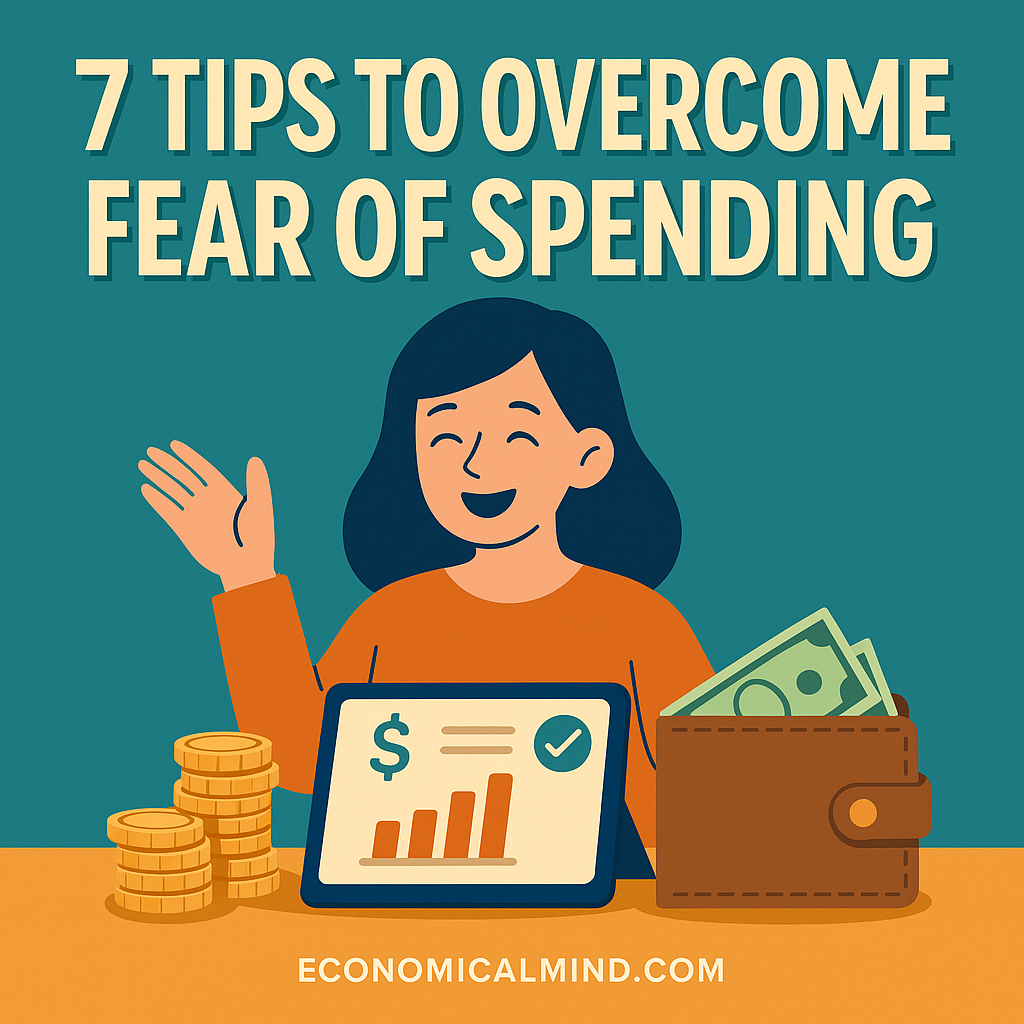
Why Some People Fear Spending
Saving money is a smart habit — but when fear or guilt stops you from spending even on essentials, it becomes a problem.
Many people are more cautious than ever with their money due to inflation, job uncertainty, or past financial struggles.
However, the fear of spending — also known as chrometophobia — can lead to stress, burnout, and even missed opportunities for joy or growth.
Finding a healthy balance between saving and spending starts with understanding your mindset.
1. Identify Where the Fear Comes From
Fear of spending often stems from deeper beliefs about money. Ask yourself:
- Did you grow up in a household where money was tight or unpredictable?
- Have you ever experienced debt or financial loss?
- Do you associate spending with guilt or irresponsibility?
These early experiences form your money scripts — subconscious beliefs that shape your behavior today. Recognizing them helps you separate past experiences from your current financial reality.
2. Redefine What “Good” and “Bad” Spending Means
Not all spending is wasteful. There’s a big difference between intentional spending and impulsive spending.
- Bad spending is when you buy things to fill an emotional void or impress others.
- Good spending is when you invest in your health, education, or happiness.
Creating a value-based budget — one that aligns with what truly matters to you — helps you spend with confidence instead of guilt.
3. Create a Guilt-Free Spending Category
Give yourself permission to enjoy your money.
Set aside a “fun fund” — even a small amount like $50 a month — for nonessential purchases.
When this money is already budgeted, you can spend it without fear because it’s part of your plan.
Over time, this helps retrain your brain to see spending as safe and controlled, not risky.
4. Focus on Financial Stability, Not Perfection
You don’t have to be perfect with money to be secure.
If your emergency fund is healthy, your bills are paid, and you’re saving consistently, it’s okay to spend without guilt.
Remind yourself: money is a tool, not a test.
Perfectionism in money management often fuels anxiety — but stability, not strictness, is the real goal.
5. Practice “Value-Based” Spending
Every purchase should reflect what you value most. Ask yourself before spending:
- Does this align with my goals?
- Will this make my life better, easier, or more meaningful?
- Am I buying this out of fear or joy?
When your spending aligns with your values, guilt fades and confidence grows.
Example:
If you value health, buying fresh groceries or a gym membership isn’t wasteful — it’s an investment in your well-being.
6. Build a Positive Relationship With Money
Try reframing how you view money. Instead of seeing it as something scarce or dangerous, think of it as energy that flows — something you can manage, direct, and grow.
Practical exercises that help:
- Write gratitude lists for what money has allowed you to do.
- Journal about financial wins, no matter how small.
- Track spending to gain clarity, not control.
These small mindset shifts help reduce anxiety and strengthen your sense of financial safety.
7. Gradually Increase Your Comfort Zone
Start by spending small amounts on things that matter to you. Over time, your comfort level will expand.
You can:
- Treat yourself to a nice meal once a month
- Invest in a course or hobby that excites you
- Replace guilt with appreciation for what your money provides
The key is to spend mindfully, not mindlessly. With practice, spending becomes a confident choice — not a fearful reaction.
Bonus Tip: Talk About It
Money anxiety thrives in silence.
Talk openly with a trusted friend, mentor, or even a financial therapist about your fears. Sometimes, hearing another perspective helps you see your situation more clearly and release unnecessary guilt.
Final Thoughts
Overcoming the fear of spending is about balance — not extremes.
You can be financially responsible and still enjoy the money you’ve worked for.
By identifying your fears, setting boundaries, and spending in alignment with your values, you’ll build a healthier, happier relationship with money.
Remember: money is meant to serve you — not scare you.
